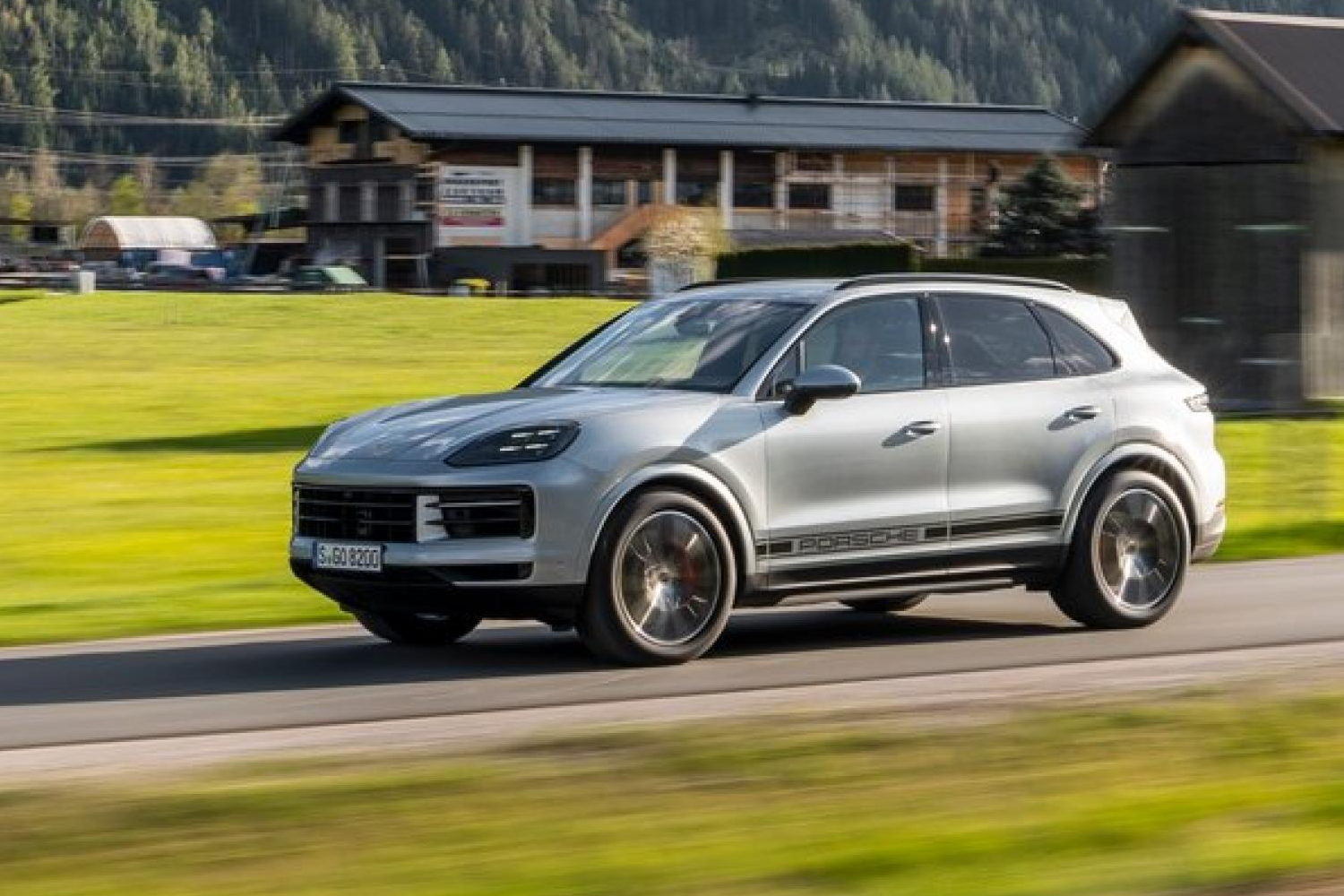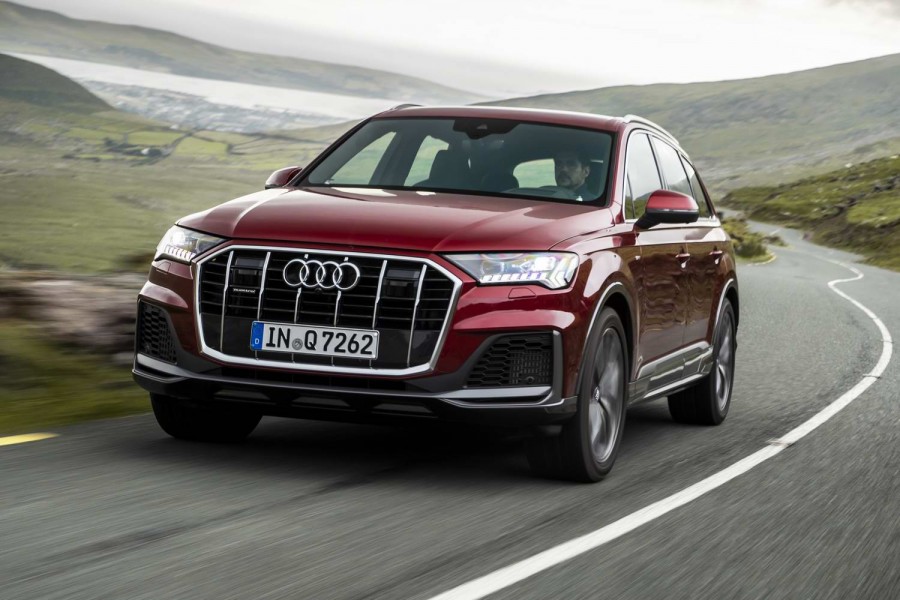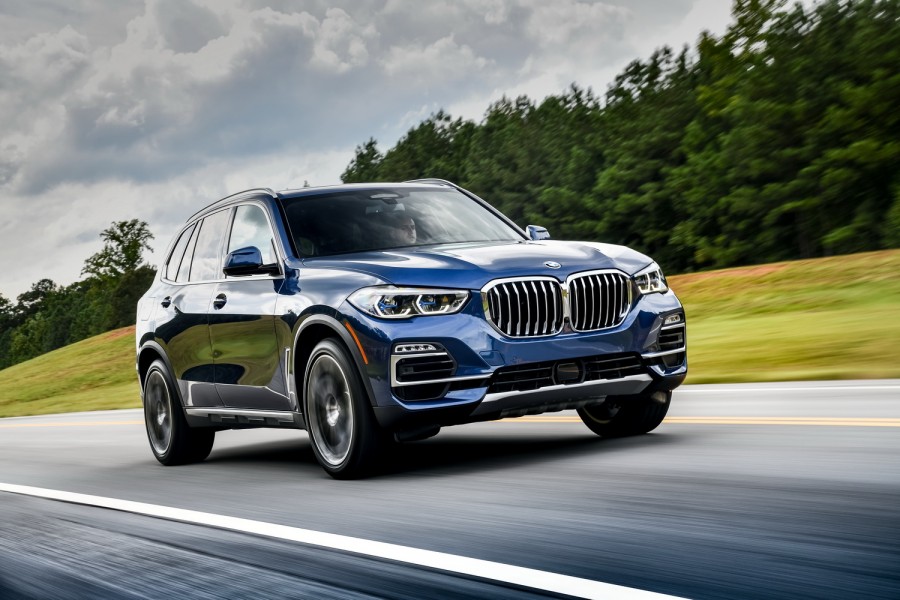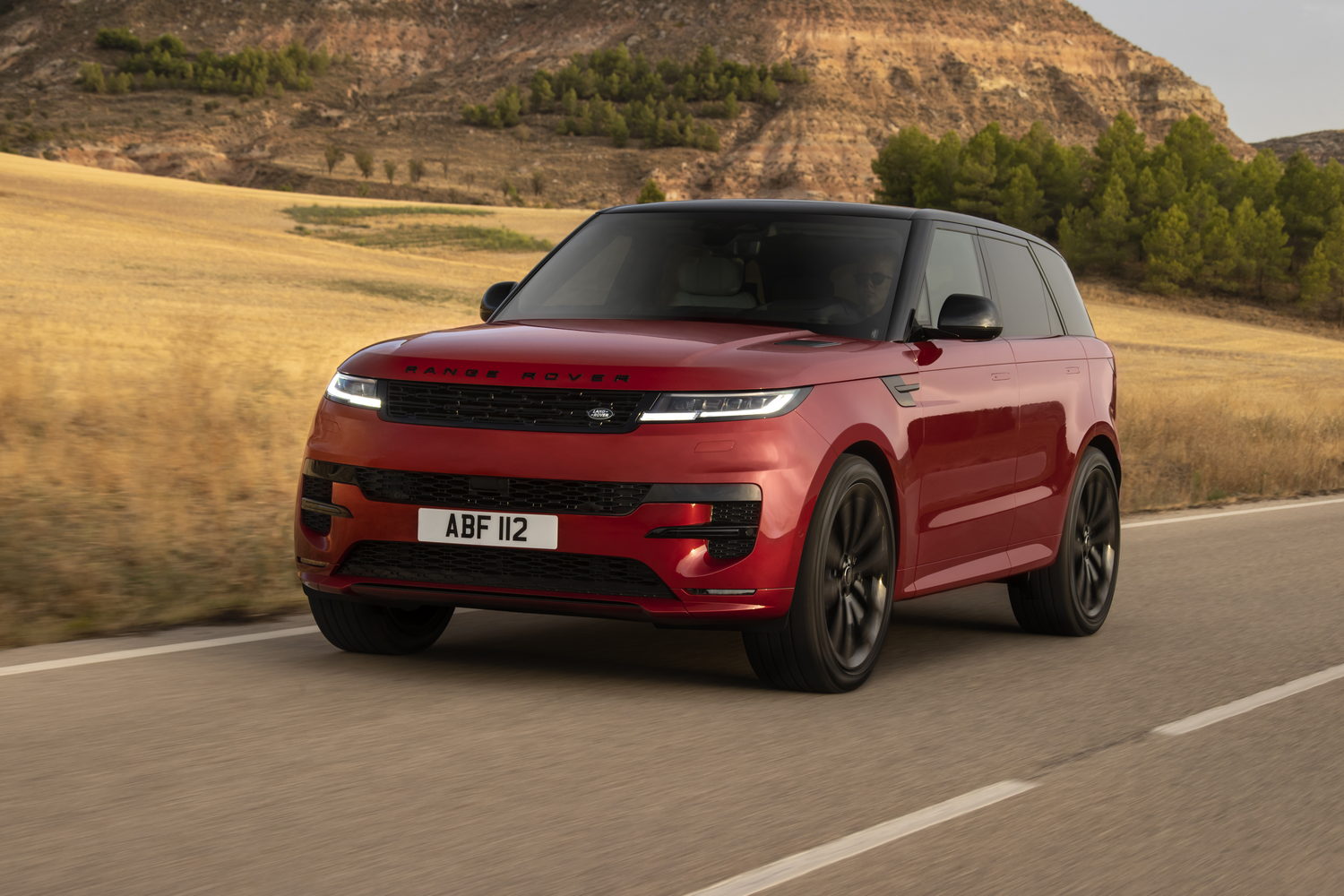The Cayenne SUV has been a roaring success for Porsche, with more than 1,250,000 examples sold worldwide since the car was first launched in 2002. More than two decades later, the current-generation car has undergone something of a mid-life refurb, getting fresh tech, improved engines and modified suspension, not to mention moderately altered exterior styling. But has all Porsche's hard work paid off? Our first test of the new car is in the most heavily tweaked model - the Cayenne S.
In the metal
It isn't especially easy to spot the differences between the old Cayenne and its successor, but modifications are there if you look closely. The external tweaks are admittedly subtle, with new headlights that use more sophisticated matrix technology to avoid dazzling other road users while improving illumination for the driver, as well as a lightly updated front end design, including a new bonnet and more arched wings. There are new paint options too, as well as a fresh range of 20-, 21- and 22-inch alloy wheels.
But by far the most immediately apparent upgrades can be found in the cabin, where Porsche has been hard at work fitting some new screens. Chief among these, and fitted to every model in the range, is the new digital instrument display, which is effectively lifted from the Porsche Taycan EV. That has allowed for the removal of the traditional binnacle, which looks a bit odd at first but isn't a design disaster, and there's a new optional - and configurable - head-up display.
Overall, though, the new layout isn't much of an improvement on the old 'hybrid' system, which cunningly combined digital and analogue displays. For us, the old system's premium-looking dial and needle matched the solidity of the Porsche interior, and the digital screens on either side were perfectly adequate, even if the outer displays could be difficult to read thanks to the position of the steering wheel. The new system has more or less solved that issue, such that it was, but it doesn't offer much else in the way of configurability.
But the new instrument cluster isn't only new screen on offer. Porsche is also offering a new passenger display that allows those in the front seat to watch videos or other menu item different to that of the central screen. All of which means if the driver wants to see the navigation view, the passenger can still watch their favourite films or TV shows. And to prevent the driver seeing that, there's a kind of filter in the screen that means the driver can't properly see what it's showing.
Our test car - the S model pictured here - came without the system, but we tested it in a conventional V6 Cayenne and found it to be a little bit of a gimmick. After all, it's cheaper for passengers to use a tablet if they want to watch a video, and short journeys won't be long enough to get into a TV show. Most of the time, it'll be less useful than an infotainment screen in the back of a short-haul airline seat. And with the digital instrument display in place, there's little need for passengers to worry too much about hiding a menu from the driver.
Anyway, with the new screens has come a new climate control panel, which pairs 'proper' toggle switches with buttons in the glossy plastic panel. It's a similar system to the one already seen in the Porsche 911, and it works well enough. Eagle-eyed readers may also notice the centre console is devoid of a gear lever, because that has moved to a strange location on the dashboard. It's hidden behind the steering wheel, as it is in the Taycan, and it's now essentially a toggle switch, rather than a conventional lever.
But while changes to the Cayenne's interior are admittedly plentiful, there are some things that have remained the same. Chief among these is the bulletproof solidity to the dashboard, centre console and door cards. Porsche's interior styling might not always be cutting edge, despite the smart new design of the latest-generation Cayenne's dash, but there's no faulting the brand's ability to build cabins solidly.
And the space on offer is just as cavernous as before. In the conventionally-shaped SUV model, there's a 772-litre boot that swallows suitcases, golf bags and anything else you'd like to throw in with consummate ease. It's enormous. And if you do need extra space, simply pop the back seats down to free up more than 1,700 litres of luggage capacity. Space for passengers is good, too, with ample head- and legroom for those in the rear seats, even if they're blessed in the height department.
Driving it
While Porsche hasn't made huge changes to the Cayenne's engine line-up, there have been some tweaks. The plug-in hybrid system has been tweaked - read our first drive of the E-Hybrid for more on that - but otherwise the biggest change is the inclusion of the V8 engine in the S model tested here.
Previously powered by a V6, the new model gets a slight power hike over its predecessor, with a total of 474hp now on tap. As with every other Cayenne in the range, that power is fed to all four wheels via the eight-speed automatic gearbox, and it allows the S to cover ground remarkably quickly. The 0-100km/h time is five seconds flat, but examples fitted with the optional launch control system (which is standard on the Coupe versions) cut that to 4.7 seconds.
That's more than sufficient power for a Cayenne (the peak output is only 4hp higher than that of the E-Hybrid, but it's 121hp more than you get from the standard V6 Cayenne) and that means there's more than enough punch for overtaking. Plant your right foot and the Cayenne surges forward relentlessly.
Despite the performance, the Cayenne S isn't much less efficient than the less powerful V6-powered Cayenne. Where the latter manages between 23.3- and 26.2mpg, the former achieves between 21.2- and 22.8mpg, which is a difference of around 10 per cent. In the real world, our test showed the extra low-down grunt of the V8 brought the two cars even closer.
The Cayenne S also sounds significantly better than the basic Cayenne. The standard car's V6 isn't bad at all, and it has a surprising amount of thunder to it in its sportier settings, but the S's V8 is on another level. The rumble and bubble at low engine speeds gives way to a roar as you accelerate, and it feels more muscular.
But while the engine may have changed, the way the Cayenne drives is much the same, albeit with a few minor tweaks. The new Cayenne rides on steel springs as standard, but our test car was fitted with the air suspension system, which Porsche has revised to make it more comfortable and to create more obvious differences between the Normal, Sport and Sport Plus settings.
Happily, the tweaks to the suspension set-up have been effective in terms of ride comfort. Air-sprung Cayennes were already remarkably comfortable in their softest settings, and Porsche has worked hard to make it even more pliant, albeit in a distinctly Porsche way.
At speed and in its most comfortable setting, the S glides over the majority of bumps almost as if they don't exist, and that makes it a decidedly comfortable motorway cruiser, in which you can cover the kilometres with immense ease. Sport mode, meanwhile, offers just enough feel through your backside to make sure you know exactly what the wheels are doing, but nothing like enough impact to disturb your passengers' comfort. It offers taut body control, too, with little in the way of lean unless you're really pushing on. It's a near-perfect balance between the demands of comfort and sportiness, and it's ideal for use on winding mountain roads.
There's a Sport Plus setting for even more enthusiastic use, and that reduces body roll to an absolute minimum. Porsche targeted zero body roll angle, and though it couldn't quite manage it, Sport Plus brings the Cayenne as close as can be expected. In fact, Porsche says the Cayenne will remain flat even when lateral forces are almost equal to the vertical force of gravity, and though it's a difficult theory to prove on public roads, there's no doubt Sport Plus mode makes the Cayenne remarkably stable in the bends.
The Cayenne S also gets bigger brakes, which make it much easier to stop the car despite its more-than-ample weight. The S weighs in at more than 2.1 tonnes, yet it can stop as easily as a family hatchback weighing 500kg less. And unlike the E-Hybrid, which has slightly vague-feeling brakes thanks to the regenerative braking demands of the hybrid system, the S's brake pedal gives you immense confidence in its capabilities.
What you get for your money
At €156,000 for the cheapest Cayenne S, the big Porsche isn't exactly a budget proposition, but then what did we expect? For Irish buyers, the plug-in hybrid E-Hybrid model represents significantly better value than the S, and it only has four fewer horses under the bonnet. With prices starting at less than €100,000, it's a much cheaper option. It'll also be cheaper to run and you don't lose much in terms of standard equipment. You get the same digital instrument display and navigation system, and you can have much the same options. The price difference is almost entirely down to the engine and the tax.
Summary
The new Porsche Cayenne carries on where the old car left off, at the head of the premium SUV range. The updated tech is largely welcome, the ride has improved very slightly and the quality is every bit as good as before. What's not to like?
Of course, it's difficult to make a sound financial case for the Cayenne S - the hybrid is considerably cheaper and only a little less potent - but price aside, it's the most appealing version of the Cayenne to be launched thus far. That thumping V8 makes a fabulous noise, and it feels a bit meatier than the V6-powered alternatives, although whether that will change when the faster Turbo and GTS models come through remains to be seen.































